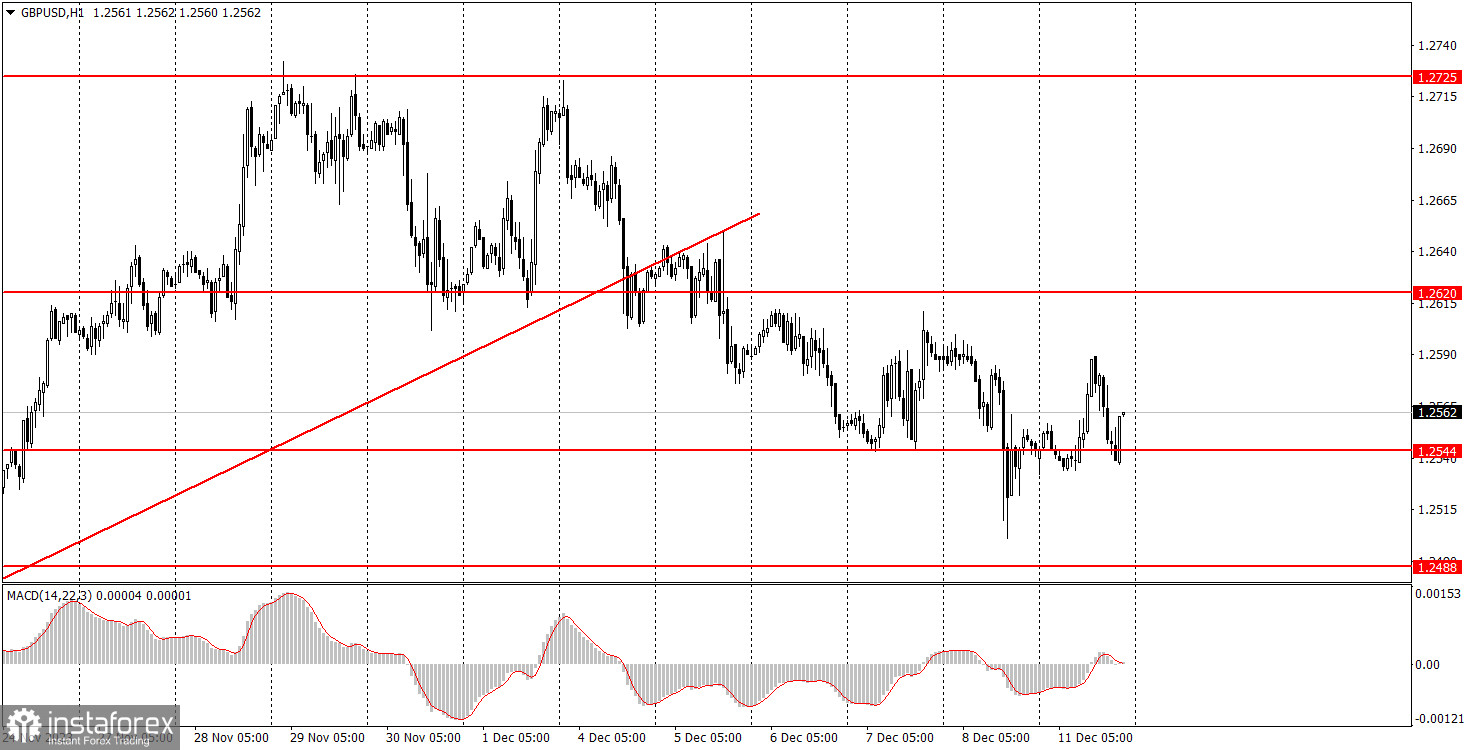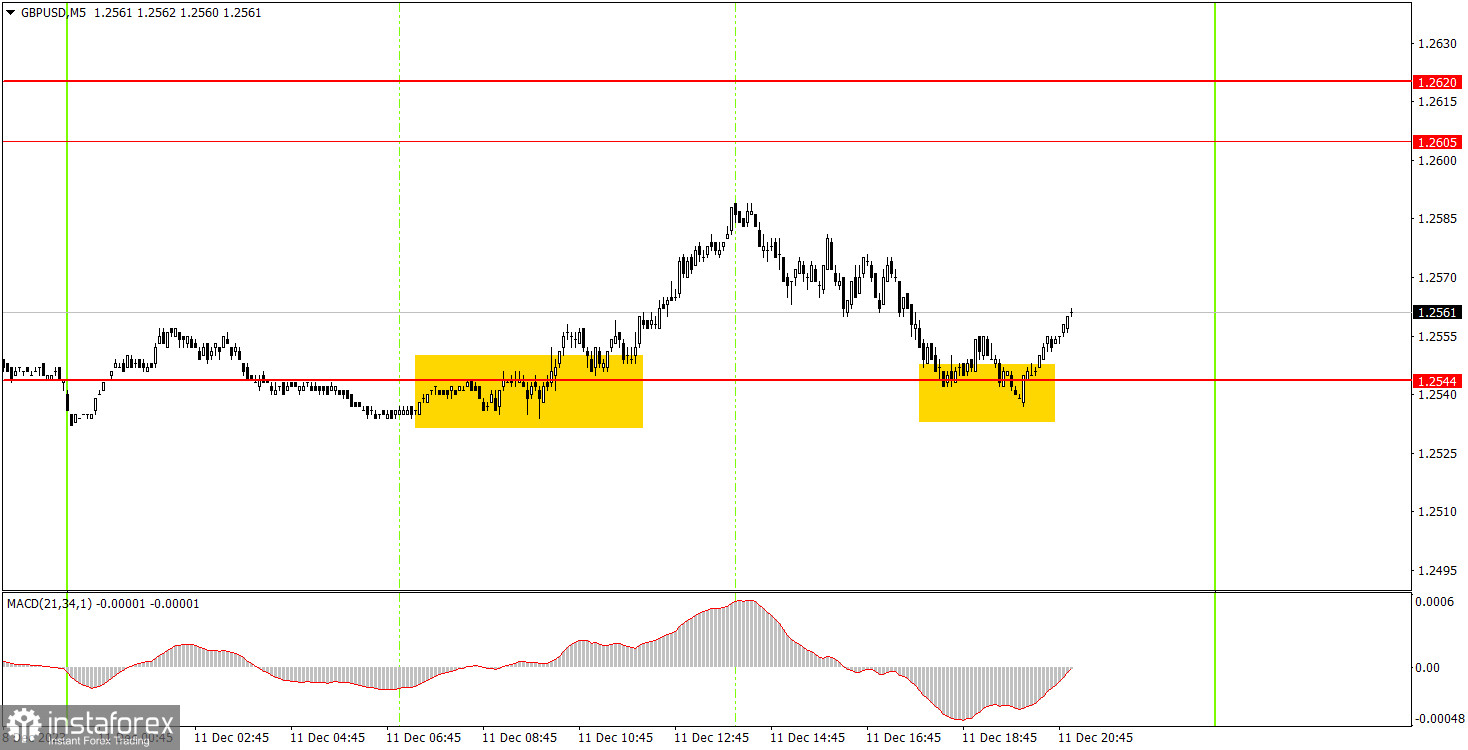Analyzing Monday's trades:
GBP/USD on 30M chart

On Monday, GBP/USD managed to both rise and fall. There were no significant economic or fundamental events in the US or the UK, and yet the market found a reason to initially buy the pound and then sell it. Overall, the pair ended the day at approximately the same levels as it opened. The technical picture remains unchanged: the pair is still in a downtrend but is not in a hurry to decline. We remain skeptical about the uptrend, as we believe the pound has risen enough, is overbought, and lacks grounds to rise further. However, the pair may receive local reasons to move in a certain way this week as important reports will be released, and both the Bank of England and the Federal Reserve are set to hold meetings. Therefore, in the next four days, the price may sharply fluctuate.
GBP/USD on 5M chart

On the 5-minute chart, two buy signals were generated. Due to the fact that the price did not stay in one place all day (unlike the euro), traders could work on these movements. Initially, the pair bounced off the level of 1.2544, then returned to it and bounced off it again. In the first case, it managed to rise by 32 pips but failed to reach the nearest target level. In the second case, the movement started quite late, so at the moment, the price has only moved up a few pips. The stop-loss was set to breakeven for the first trade, and no profits were gained from the second one.
Trading tips on Tuesday:
On the hourly chart, the GBP/USD pair continues its negative trading, which is both weak and uncertain. We believe that the pound should continue to fall as it simply has no fundamental and macroeconomic reason to justify an upward movement. The US reports that were released on Friday did not disappoint, but now the dollar needs to survive the upcoming week with the meetings of the Bank of England and the Federal Reserve, as well as a whole series of important reports.
We suggest focusing on the 1.2544 level. Bounces from it or breakthroughs will act as trading signals. The only assumption is that at the beginning of the US trading session, the price may start "flying" from side to side or just sharply change the direction of movement as the US inflation report is released.
The key levels on the 5M chart are 1.2270, 1.2310, 1.2372-1.2387, 1.2457-1.2488, 1.2544, 1.2605-1.2620, 1.2688, 1.2723, 1.2787-1.2791, 1.2848-1.2860. On Tuesday, the UK will release reports on unemployment and wages in the morning, which are quite interesting, but they are unlikely to trigger a strong movement. Traders will keep an eye on the US inflation report, and this is the most important event of the day.
Basic trading rules:
1) Signal strength is determined by the time taken for its formation (either a bounce or level breach). A shorter formation time indicates a stronger signal.
2) If two or more trades around a certain level are initiated based on false signals, subsequent signals from that level should be disregarded.
3) In a flat market, any currency pair can produce multiple false signals or none at all. In any case, the flat trend is not the best condition for trading.
4) Trading activities are confined between the onset of the European session and mid-way through the U.S. session, after which all open trades should be manually closed.
5) On the 30-minute timeframe, trades based on MACD signals are only advisable amidst substantial volatility and an established trend, confirmed either by a trendline or trend channel.
6) If two levels lie closely together (ranging from 5 to 15 pips apart), they should be considered as a support or resistance zone.
How to read charts:
Support and Resistance price levels can serve as targets when buying or selling. You can place Take Profit levels near them.
Red lines represent channels or trend lines, depicting the current market trend and indicating the preferable trading direction.
The MACD(14,22,3) indicator, encompassing both the histogram and signal line, acts as an auxiliary tool and can also be used as a signal source.
Significant speeches and reports (always noted in the news calendar) can profoundly influence the price dynamics. Hence, trading during their release calls for heightened caution. It may be reasonable to exit the market to prevent abrupt price reversals against the prevailing trend.
Beginners should always remember that not every trade will yield profit. Establishing a clear strategy coupled with sound money management is the cornerstone of sustained trading success.





















